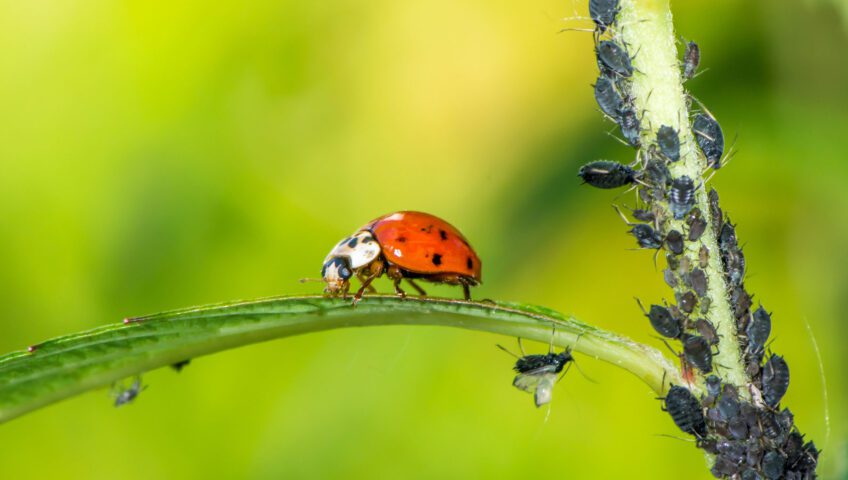Many gardeners have a special place in their hearts for ladybugs. In fact, some even have them shipped in to let loose in their gardens.
There’s an entire class of bugs called beneficials because they dine only on other pests. Ladybugs fall perfectly into this category. Also called the lady beetles or the ladybird beetles, they’re hungry when in the larval stage of life. They love aphids more than anything else, but they’re more than willing to eat scales, mealy bugs, leaf hoppers and mites if they’re available. One ladybug can eat more than 5,000 aphids during a lifetime, and if you multiply that out and imagine adding several to your garden, you have a place free of pests.
If you have plants and flowers that provide nectar and pollen to help attract them, this can be an effective way to go. You have to keep your garden virtually chemical free to attract and keep them there, and you’ll need to keep things moist as well. While you can order them, you can also simply attract them. Any pest control professional will tell you that native plants are key to establishing a good ladybug population. Make certain you’re familiar with the entire lifecycle, though, or you may accidentally kill them.
Don’t confuse ladybugs with their evil twins the Asian beetle, though. While these two often look fairly similar to the untrained eye, the Asian beetle is not a friend of your garden or your home, and your best bet is to contact a good Brevard County pest control service like Slug-A-Bug to help identify and eliminate them if necessary.
